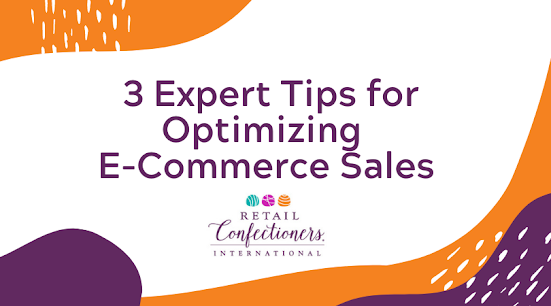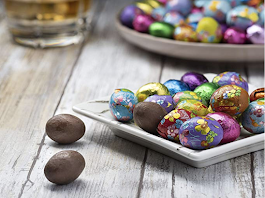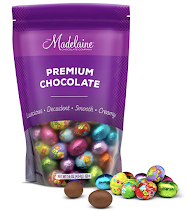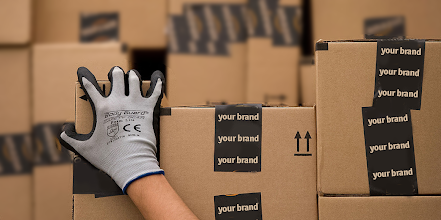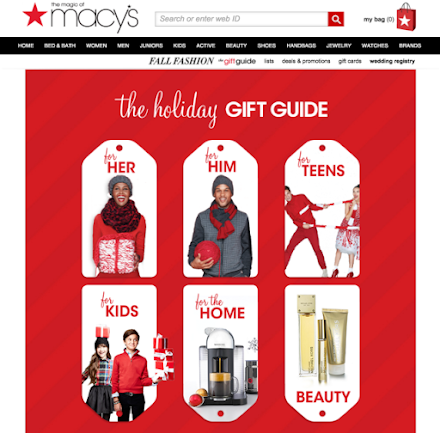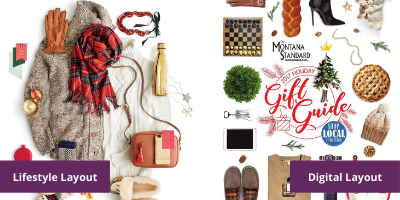|
|
Posted By RCI,
Tuesday, June 22, 2021
Updated: Friday, August 20, 2021
|
Looking for answers to these questions? Keep reading as Theresa Packard with CommerceV3, offers answers and actionable strategies to start implementing in your business immediately. How do I best optimize my website? Optimizing your site should be done based on site metrics and usability, as well as site speed. I'll address how to analyze your site metrics and usability with regards to conversion, but for now, let's cover the bases of site speed.  If your site is not operating at an optimum speed, it may appear to be missing a few pieces to the puzzle. Measuring the site speed on your homepage and top category pages will allow to see if there are images or other code that could be significantly slowing your site. If your site is not operating at an optimum speed, it may appear to be missing a few pieces to the puzzle. Measuring the site speed on your homepage and top category pages will allow to see if there are images or other code that could be significantly slowing your site.Many site speed tools such as Google Page Speed Insights, WebPageTest and Pingdom, are free. A site is considered slow if it takes longer than three seconds to load. After running the site speed tools, you may find the top culprits that can affect website speed are often large images that need optimized, script that can be loaded at the bottom of the page versus the top of the page, and additional redirects on the page. Increasing Conversion Rates This is the million-dollar question— how to convert browsers into purchasers? When consulting clients, I have found the best place to start is to ask a series of questions. The following questions can help you identify any barriers that may be affecting your conversion rate. What do your analytics tell you? The first thing I tell all retailers is to take a look at their analytics (we use Google analytics) to see if there are parts of your site that show the best conversion and parts that show the worst. How do you get more out of the things that show high conversion and high dollars? What’s wrong with the worst parts? Is there something on that landing page acting as a barrier? Are your customers getting lost? Are there places on your site where customers may be getting lost? Do they have to think about their journey through your site or is it intuitive? If you have a customer service agent, this may be a good person to ask, since they’re likely the one fielding questions about how to navigate your site. If not, try asking a loyal customer about their experience on your site. Can customers easily find the products they want through search and navigation? When a customer reaches the product page, how easy is it for them to see the pricing, count or size and, then, add their products to the cart? A shortage of important details like these is a common pitfall, that can quickly turn potential customers away. Are there product reviews on your site? Many online shoppers make purchasing decisions based on other customers’ reviews. Be sure your website has a user-friendly reviews program. Have you tried to checkout on your own site? When moving through the shopping cart to checkout, how easy is it for a customer to proceed through each step? We suggest making clear, well-defined steps through checkout. Make sure customers can easily enter shipping and billing information and also have certain already-known fields pre-entered (such as their email address and shipping information when logged in). To help with ease of checkout, offer alternative payment methods like PayPal, Amazon, Apple Wallet, Visa Checkout and etc.— these are especially useful for individuals shopping on mobile devices. There's a lot you can do to optimize your website and improve your conversion rates, sometimes the best way to identify hang ups is by test driving your site on a regular basis. Crave more? If you like what you read here, look for the "Subscribe now" box on the right to enter your email address and start receiving weekly tips, like this, delivered straight to your email inbox. RCI's blog is just one of the many resources we offer to help candy makers refine their craft and build upon their business and marketing practices. Follow us on Facebook for even more sweet inspiration.
Tags:
E-Commerce
website
Permalink
| Comments (0)
|
|
|
Posted By RCI,
Tuesday, April 27, 2021
Updated: Friday, August 20, 2021
|
Did you know what grabs consumers’ attention in stores, is not always the same for online? Keep reading for 3 fresh tips from CEO of Pearl Resourcing, Emily Page, to help make your product stand out online and gain more new and return customers.
High-Quality Photos + Mock-Ups The first thing a shopper notices online is not the packaging or the product, but the image of the packaging or product. In that sense, you must focus on the quality of your online images to convert sales. Pay for a professional photographer to not only take the photo, but touch it up so the lighting and realism is clear. Or consider hiring a graphic designer to professionally brighten, sharpen and enhance the images you already have. The primary product photo includes the exterior packaging with examples of the interior product fully visible on a plain white or grey background to optimize contrast. Shadows should also be minimized or eliminated. Secondary photos should include close-ups of your treats, also on a minimal background, making it clear what's included in a purchase. If you have the budget, the next set of photos should include “lifestyle” perspectives of the chocolates or candies opened or being enjoyed. Center your product in the photo and make it as large as it can safely fit in the dimensions required for your shopping site. The closer to the edge, the larger it will appear in the search results on your site, making it more likely to be clicked. Compare with Competition in Search Results When consumers shop, they often use the search bar to find what they want. Imagine the search results page to be a retail store shelf. You want to be sure your packaging design and product images help your products stand out among the competition online. Before you embark on a packaging redesign, enter search terms into a shopping platform and look at what the consumer will see when they quickly scan search results. The human eye notices color, shape, symbols and text, in that order. Both the packaging structure and artwork should utilize high-contrast colors and shapes should be bold and unique. If you only sell products on your website, consider how each item looks on your own site as customers browse or search. Are product flavors or callouts clear enough that a consumer is able to distinguish differences between each of the items listed? If you sell on other e-commerce sites the same is true—if all chocolate boxes in the category are white and brown, how can you stand out so consumers notice and evaluate your product over the competition? Choose bold colors and unique shapes—adding a bow or incorporating a photo with a different placement of your chocolates will draw the eye. Use Secondary Packaging to Grab Attention Oftentimes online purchases are decided based on the product images on your website. After an order is placed, your brand may go unthought of until that lovely unboxing moment, when the customer opens the package upon arrival. Additional packaging is a billboard for advertising your other products, telling your brand story or inviting them to engage with your larger community of fans online. Printed inserts can provide a quick reminder to get customers back to your website and to engage on your social media pages. Custom tape on the outside of the box reminds them of the inspiring story of your brand or product. Although there is extra cost involved to print secondary packaging elements, these elements can increase sales volume and help you capture repeat sales. Consider secondary packaging as a marketing expense instead of a packaging expense to keep existing customers coming back for more. Selling your confections is an art form in itself and there are unique elements of the online shopping experience that influence best practices in packaging design. By utilizing these tips, you can make a difference in how consumers view and engage with your products, allowing you to achieve even better sales. Crave more? If you like what you read here, look for the "Subscribe now" box on the right to enter your email address and start receiving weekly tips, like this, delivered straight to your email inbox. RCI's blog is just one of the many resources we offer to help candy makers refine their craft and build upon their business and marketing practices. Follow us on Facebook for even more sweet inspiration. Not a member? Click here to learn how RCI can help you build your sweet business. About Emily Page: Emily has managed and launched multiple 7-figure product brands in Costco, Williams-Sonoma, Kroger, and Amazon as a Business Growth Consultant and CEO of Pearl Resourcing. She’s bringing you the expertise, resources, and mentors you need so that you can develop products and make them sell in her blog articles and her START TO SOLD YouTube channel and blog. http://emilyannepage.com http://pearlresourcing.net http://youtube.com/c/starttosold/
Tags:
E-Commerce
Online
Packaging
Photography
sales
Permalink
| Comments (0)
|
|
|
Posted By RCI,
Tuesday, November 3, 2020
Updated: Thursday, January 21, 2021
|
Holiday gift guides are a visual and trendy way to promote your popular holiday items both online and in your retail store. According to a recent survey by Dynata for Redpoint Global, “nearly two-thirds of the 1,000 adult shoppers surveyed (62%), planned to do all their holiday shopping online.” While Deloitte predicts “e-commerce holiday retail sales to grow between 25% to 35% from November through January.” Don’t wait to promote your holiday items either. Analysts believe holiday shopping will begin well before Black Friday. A study by Coresight Research revealed, “three in 10 consumers say they expect to start their holiday shopping earlier than usual this year." Make it easy for shoppers to find the perfect gift for everyone on their list with well-thought out gift guides. Photo credit: Macy's Pick a specific category. A visually appealing gift guide will not only help put your gift items in front of consumers, it will also help them check recipients off their shopping list with suggested gift ideas. Need ideas for your hard-to-buy-for dad? Check. What about stocking stuffers or the perfect gift for the person on your list who has everything? Check and check. When it comes to creating your gift guide, imagine who your customers will be buying for, targeting specific customer segments beyond “women,” “men” and “kids.” Consider categorizing lists by interests, like a sweet and nutty trail mix for outdoor enthusiasts or a chocolate and wine pairing for the wine aficionado. Another easy idea would be to categorize items by ingredient, flavor or texture. Compile your peanut butter meltaway, peanut brittle, chocolate-covered peanuts and peanut butter fudge onto a guide labeled “Gifts for Peanut Butter Lovers.” Or do you have a collection of mint-chocolate flavored products? What about a guide for those who are “All About the Crunch,” complete with caramel corn, toffee, brittle and chocolate-covered pretzels? 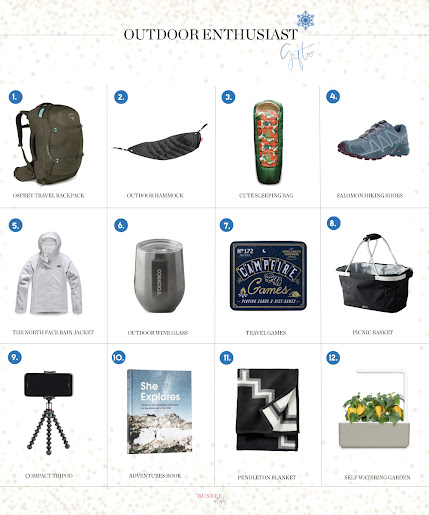 Find the perfect gift for the outdoor enthusiast, thanks to this gift guide by BusbeeStyle. We especially like the simple grid design. The numbers and labels make it easy for customers to identify and purchase products with links for each item included in the description. Find the perfect gift for the outdoor enthusiast, thanks to this gift guide by BusbeeStyle. We especially like the simple grid design. The numbers and labels make it easy for customers to identify and purchase products with links for each item included in the description. 
Theo Chocolate has curated a flavor-inspired collection of gift ideas that looks both beautiful and delicious. Categories include the perfect gift ideas for lovers all things spicy, minty, salty, fruity and then some. Click here to view the full guide.
 This gift guide from Always Order Dessert is for those well-meaning shoppers looking to snag a last-minute gift that doesn’t feel like an afterthought. This bright and bold header makes it super clear to the reader that the items on this gift guide are the perfect solution for the last-minute shopper. This gift guide from Always Order Dessert is for those well-meaning shoppers looking to snag a last-minute gift that doesn’t feel like an afterthought. This bright and bold header makes it super clear to the reader that the items on this gift guide are the perfect solution for the last-minute shopper.Consider categorizing some items by price, since most people have a budget in mind when shopping for gifts. “While many shoppers may gravitate toward lower-priced categories, don’t shy away from a luxury list for those looking to splurge,” suggests Cathie Ericson with Square. Despite trends indicating that many shoppers will be checking their list earlier than ever this year, Coresight Research shows 1 in 10 consumers expect to procrastinate. Since these are likely the shoppers who benefit from gift guides the most, compile a “last-minute gifts” guide of popular, ready-to-gift items that can be purchased in a pinch. Try to keep your gift guides concise, highlighting three to seven items. Too many items can get lost and turn shoppers away before they’re able to make a decision, let alone a purchase. If you have more items that you’d like to highlight, make several smaller gift guides instead of one big list. Get Visual Visuals are a must when it comes to a good gift guide. Period. If you don’t have a photo for every item on your gift guide, breakout your smart phone (or ask a friend or a member of your team who has a smart phone with a good camera to help) and start snapping. For best results, we recommend photographing your products against colors that contrast to make your product pop. Decide if you’d like to layout your products as part of a more “lifestyle” look or if you plan to remove the background of your product photos and lay them out using design software (keep reading for tips on how to do this—for free—with zero design experience). If you plan to remove the background, photograph product on a solid, white sheet of paper or cardstock for milk or dark chocolate. Try a darker, solid color for the background when photographing white chocolate. Sweet tip: Canva.com is a free graphic design platform that is easy to use even if you have zero design experience. With free and paid subscriptions, Canva’s a super-easy “background remover” tool removes the background of an image in one click. By removing the background, you can easily achieve a professional look by dragging and dropping your gift items and their descriptions within the guide layout. Click here to watch Canva’s two-minute tutorial. Partner with Local Businesses  High Note Gifts of Nashville features some of their favorite local gifts in this easy-to-follow gift guide. High Note Gifts of Nashville features some of their favorite local gifts in this easy-to-follow gift guide.Invite some of your favorite local businesses to be featured in your gift guide. According to a study by Google, 66% of shoppers plan to shop more at local small businesses in 2020. Coffee shops, wineries and boutiques are examples of local businesses to partner with this holiday season. Offer to include one of their signature items on your guide and ask them to share your gift guide on their own social media pages. Tagging their business in your social media posts will offer your partners greater brand exposure and encourage them to return the favor. Seal the Deal Before tying your gift guide(s) with a bow, make sure it is clear how to purchase the items listed. This may include a web address and phone number or a direct link to your website or Facebook Shop. For shoppers seeking unique, local gifts to share this holiday season, a fun holiday gift guide is sure to pique their interest. We think you’ll be surprised at how easy it is to create a professional-looking guide highlighting your products. Cheers to a sweet holiday season ahead! Crave more? If you like what you read here, look for the "Subscribe now" box on the right to enter your email address and start receiving weekly tips, like this, delivered straight to your email inbox. RCI's Tip of the Week blog is just one of the many resources we offer to help candy makers refine their craft and build upon their business and marketing practices. Follow us on Facebook for even more sweet inspiration.
Tags:
E-Commerce
gifts
Graphic Design
Holidays
Marketing
online shopping
Permalink
| Comments (0)
|
|
|
Posted By RCI,
Thursday, March 26, 2020
Updated: Tuesday, April 21, 2020
|
Despite all the uncertainty that comes with the COVID-19 crisis, we are certain this will pass. We are also certain that things are and will continue to change. But change is normal and change can be good. Take this opportunity to embrace change and your business could change for the better.
Here’s a list of recommendations to help your business survive the weeks ahead and come out of this better than ever. Stay connected with RCI’s community and email us with any questions you need answered or suggestions you’d like to share.
Leadership
- Know that this isn’t going to be easy, but you didn’t become an entrepreneur because it was the easy route. Trust your instincts and lean on the support of your RCI community, your local community and your team.
- Take care of yourself. If you don’t take care of yourself, you certainly won’t be able to take care of your business and your team. Be intentional about getting enough sleep, eat healthy, drink plenty of water and move your body a minimum of 20 minutes a day. You got this!
- Stay positive. According to Bob Phibbs, The Retail Doctor, “People are still buying things, and they are buying things for two reasons right now: (1) To get them through their day, so they are shopping for the things they need to make life work for them right now. (2) To help them escape from their day, so they are shopping for pleasures and fun things that will bring them joy and keep them busy,” (retaildoc.com).
- Take this time to educate yourself and your team. Explore online education opportunities to learn more on the topics of business, leadership, candy making and marketing. RCI members can login to view past education presentations.
- Connect with fellow RCI members to ask and answer questions on RCI’s online forum, List Serve.
- Curb thoughts of uncertainty and anxiety during downtime by reading books to help you grow as a business leader. Click here to read RCI’s recommended reading list.
- Get inspired to become a better leader by getting plugged into to some great podcasts. Learn from expert business leaders, many of which are navigating some of the same challenges right now that you are. Check out RCI’s list of 10business-related podcasts.
COVID-19 Education & Staff
- Go straight to the source for updates on COVID-19 from health and governmental agencies, such as The Centers for Disease Control and Prevention (CDC) and your state and local health agencies. Review the CDC’s Interim Guidance forBusinesses and Employers to plan, prepare and respond to COVID-19.
- Employ strict protocols for preventing exposure in the workplace and reporting symptoms. See below for links to additional resources addressing common questions:
- Do not disclose an employee's name if they have contracted COVID-19. You may have to disclose to other employees that they may have been exposed.
- To prevent stigma and discrimination in the workplace, the CDC recommends using only the guidance provided on its COVID-19 web page to properly determine risk. Do not make determinations of risk based on race or country of origin.
Operations
- Be aware of temporary guidance put in place by the Food and Drug Administration (FDA) regarding preventive controls, food supplier verification and onsite audits.
- Get your products in customers’ hands safely. If your retail store is open, this may require that you limit the number of individuals in your store at one time or encourage shoppers to call ahead for curbside pickup or delivery.
- Develop your own delivery program or look into local delivery services to partner with if your team doesn’t have the capability to deliver. See what Doordash, Grubhub and UberEats are doing to support local businesses.
- Keep staff busy tackling tasks that had previously been put off, because everyone was too busy—tasks like organizing inventory, reorganizing the store, cleaning, refreshing the website and creating lots of social media and email content.
Cleaning
- Create a new cleaning schedule and update procedures on employee hygiene practices (i.e., handwashing, etc.) as well as cleaning and disinfecting surfaces and equipment. Clickhere for guidance from the CDC.
- The most effective way to clean most equipment is with soap and water. Just scraping or using water alone will not be effective.
- Cleaning equipment with an all-oil-based product (and no sugars to help dissolve the product away) may require several oil flushes before introducing water or chemicals. Without the oil flushes, cleaning chemicals can extract the oil, leaving behind solid masses cemented to the pipes or agitators in equipment.
- Educate yourself on action steps required in the case someone with a suspected or confirmed case of COVID-19 was in your facility, follow these CDCguidelines.
Online Sales
Marketing & Promotion
- Use all forms of communication to let shoppers know you are open and what you are doing to ensure the cleanliness of your facility, staff and products. Where appropriate, share your cleaning protocols and photos of your clean candy kitchen and retail store.
- Don’t stop marketing your business! Create content that appeals to consumers by offering a way to escape the chaos through fun, comfort and joy.
- Think of members in your community who need to know someone is thinking of them. Consider a promotion to support the elderly quarantined in their homes and in nursing homes. Think of ways to thank those on the front lines—the medical workers and first responders, who are working hard to keep our communities safe and healthy.
- Invite shoppers to purchase gift cards from you and other local businesses as a way to support local. Some businesses are offering discounted gift cards to generate cash flow.
- Create eye-catching graphics for your store, website and social media outlets using free and user-friendly tools like Canva or Adobe Spark. Both sites have hundreds of professionally designed templates and layouts, making it easy for non-designers to create impressive, custom designs.
- Share easy recipes for followers to make at home with their kids, featuring your products. Consumers with kids out of school are looking for fun and easy ways to pass time as a family. Check out KidsActivities.net for easy candy recipes for kids using five ingredients or less. Substitute candy ingredients to make recipes your own. Considering bundling ingredients for one recipe and selling it as a “take-and-make kit.”
- Bundle products together by theme to help generate ideas of who your followers can shop for. RCI member, Bon Bon’s Candy House, has had success promoting care packages for “Peanut Butter Lovers,” “Grandpa’s Favorites,” and more.
- Host a Facebook Live event to get face-to-face with your followers even if your retail store is closed. RCI member, Dolle’s Candyland, has regularly scheduled Facebook Live videos to promote Easter items, new products and other merchandise that can be ordered through their virtual shopper service. Click here for tips from The Retail Doctor for using Facebook Live successfully.
- Host a contest on social media. RCI member, Mister Ed’s Elephant Museum and Candy Emporium is encouraging their followers to share positive thoughts for a chance to win their sweet treats. Check out this blog post by Hootsuitefor creative social media contest ideas.
- Encourage customers to host virtual tasting parties. Sell a tasting party bundle of your products and provide content on the tasting experience or lead a virtual tasting on Facebook Live or try Zoom for video conferencing (free and tiered pricing is available).
- Have a branded delivery vehicle? Consider visiting local neighborhoods, musical ice-cream-truck style, to sell your products. Other businesses have asked their social media followers to private message their addresses to be added to the delivery route. Share your route on social media and let people know when to expect you. First, check local regulations to ensure this activity is permitted.
- Educate and entertain social media followers by creating behind-the-scenes videos showing how your businesses makes some of your signature confections.
- Encourage customers to share photos of themselves enjoying your products from home and ask them to tag your business and/or use a creative hashtag.
- Offering curbside pickup is a great way to ensure the health and safety of your staff and customers, while continuing to do business. Perform practice runs to ensure an excellent customer experience. If taking orders by phone, have a checklist of important questions to ask customers—such as, “what color and model of car will you be arriving in?” making it easy to find them. Coach staff to thank every customer for their business over the phone and at pick up.
- Include handwritten notes along with all pickup and delivery orders, personally thanking customers for supporting your business.
- Update your store hours on your website, social media pages and all other third-party sites, such as your Google listing.
- If your retail store is closed or partially closed, start planning and preparing for a grand re-opening now. Be open with your staff about your plans and seek their input.
Closing thoughts
Doing business during times of uncertainty is going to be hard, but you are not alone. If business has slowed down for you (and it probably has—unless, of course, your business involves toilet paper or hand sanitizer), take advantage of the down time to learn, try new things and cross items off your list.
If you ran a successful business prior to this crisis, chances are you have a community of people who will be happy to support your business now. Now, more than ever, consumers are looking for ways to support local businesses. Find new ways to engage with consumers and remember that your sweet treats offer people comfort and hope, and help express gratitude, kindness and love to each other.
As you navigate these unprecedented times, we hope this offers you ways to challenge yourself and your business to grow and learn—so you and your business can come out of this better than ever.
Crave more? If you like what you read here, look for the "Subscribe now" box on the right to enter your email address and start receiving weekly tips, like this, delivered straight to your email inbox. RCI's Tip of the Week blog is just one of the many resources we offer to help candy makers refine their craft and build upon their business and marketing practices.
Tags:
Cleaning
COVID-19
E-Commerce
Education
Leadership
Marketing
online shopping
Operations
Promotion
Resources
Social Media
Permalink
| Comments (0)
|
|
|
Posted By RCI,
Tuesday, July 2, 2019
Updated: Monday, April 27, 2020
|
Looking for answers to these questions? Keep reading as RCI member, Theresa Packard with CommerceV3, offers answers and actionable strategies to start implementing in your business immediately.
HOW DO I BEST OPTIMIZE MY WEBSITE?
Optimizing your site should be done based on site metrics and usability, as well as site speed. I'll address how to analyze your site metrics and usability with regards to conversion, but for now, let's cover the bases of site speed.
 If your site is not operating at an optimum speed, it may appear to be missing a few pieces to the puzzle. Measuring the site speed on your homepage and top category pages will allow to see if there are images or other code that could be significantly slowing your site. If your site is not operating at an optimum speed, it may appear to be missing a few pieces to the puzzle. Measuring the site speed on your homepage and top category pages will allow to see if there are images or other code that could be significantly slowing your site.Many site speed tools such as Google Page Speed Insights, WebPageTest and Pingdom, are free. A site is considered slow if it takes longer than three seconds to load. After running the site speed tools, you may find the top culprits that can affect website speed are often large images that need optimized, script that can be loaded at the bottom of the page versus the top of the page, and additional redirects on the page.
INCREASING CONVERSION RATES
This is the million-dollar question— how to convert browsers into purchasers? When consulting clients, I have found the best place to start is to ask a series of questions. The following questions can help you identify any barriers that may be affecting your conversion rate.
What do your analytics tell you?
The first thing I tell all retailers is to take a look at their analytics (we use Google analytics) to see if there are parts of your site that show the best conversion and parts that show the worst. How do you get more out of the things that show high conversion and high dollars? What’s wrong with the worst parts? Is there something on that landing page acting as a barrier?
Are your customers getting lost?
Are there places on your site where customers may be getting lost? Do they have to think about their journey through your site or is it intuitive? If you have a customer service agent, this may be a good person to ask, since they’re likely the one fielding questions about how to navigate your site. If not, try asking a loyal customer about their experience on your site.
Can customers easily find the products they want through search and navigation?
When a customer reaches the product page, how easy is it for them to see the pricing, count or size and, then, add their products to the cart? A shortage of important details like these is a common pitfall, that can quickly turn potential customers away.
Are there product reviews on your site?
Many online shoppers make purchasing decisions based on other customers’ reviews. Be sure your website has a user-friendly reviews program.
Have you tried to checkout on your own site?
When moving through the shopping cart to checkout, how easy is it for a customer to proceed through each step? We suggest making clear, well-defined steps through checkout. Make sure customers can easily enter shipping and billing information and also have certain already-known fields pre-entered (such as their email address and shipping information when logged in). To help with ease of checkout, offer alternative payment methods like PayPal, Amazon, Apple Wallet, Visa Checkout and etc.— these are especially useful for individuals shopping on mobile devices.
There's a lot you can do to optimize your website and improve your conversion rates, sometimes the best way to identify hang ups is by test driving your site on a regular basis.
Crave more? If you like what you read here, look for the "Subscribe now" box on the right to enter your email address and start receiving weekly tips, like this, delivered straight to your email inbox. RCI's Tip of the Week blog is just one of the many resources we offer to help candy makers refine their craft and build upon their business and marketing practices.
Tags:
E-Commerce
Increase Sales
Marketing
website
Permalink
| Comments (0)
|
|
|
Posted By RCI,
Tuesday, October 16, 2018
Updated: Monday, April 27, 2020
|
Did you know Free Shipping Day is Friday, December 14? This commercial holiday was introduced in 2008 as a way to extend the online shopping season, that for many e-commerce retailers starts to diminish following Cyber Monday at the end of November.
Last December, Freeshipping.com attracted 500,000 consumers looking to save on holiday gifts. If you already have an e-commerce site, participating in Free Shipping Day could help your business gain exposure and entice new consumers to discover your products.
Before jumping on the bandwagon, we highly recommend doing your research to ensure you don’t get burned by low profit margins or unexpected demand. You will find that many companies require a minimum spend (or threshold) for shoppers to qualify for free shipping, while others restrict qualifying purchases to best-selling products with the highest profit margins. Another idea may be to limit your free shipping promo code to only new or loyal customers or create your own free shipping day at a time when sales are slower, and forget signing up with Freeshipping.com until you have a better grasp on what to expect for the holiday.
If you’re looking to increase your website’s conversion rate, this is almost guaranteed to do the trick, however, it is important that you also understand this kind of promotion comes with risks, especially during the busy holiday season. RCI member, Rheo Thompson Candies, had great past success generating early Easter orders with a free shipping promotion, however, they later concluded the promotion was conditioning their customers to wait for free shipping to place their holiday orders. If this is a route you wish to explore, consider limitations to help avoid customers abusing the promotion. Perhaps limit free shipping within a certain radius of your store to reduce shipping expenses.
A free shipping promotion can be a great way to attract new customers or thank loyal customers, but as with any successful promotion it requires careful preparation and planning to ensure the result is worth the investment. To learn more and get involved, visit freeshipping.com. Here, retailers are invited to fill out a form on their website to be listed as one of the over a thousand participating businesses. Have you participated in Free Shipping Day in the past? If so, tell us about your experience in the comment section below.
RCI's Tip of the Week blog is just one of the many resources we offer to help candy makers refine their craft and build upon their business and marketing practices. Review past blog posts for quick and actionable tips to apply to your business. Look for the "Subscribe now" box on the right to enter your email address and start receiving weekly tips, like this, delivered straight to your email inbox.
Not a member? Click here to learn how RCI can help you build your sweet business.
Tags:
E-Commerce
Free Shipping Day
Holidays
Marketing
Shipping
Permalink
| Comments (0)
|
|




